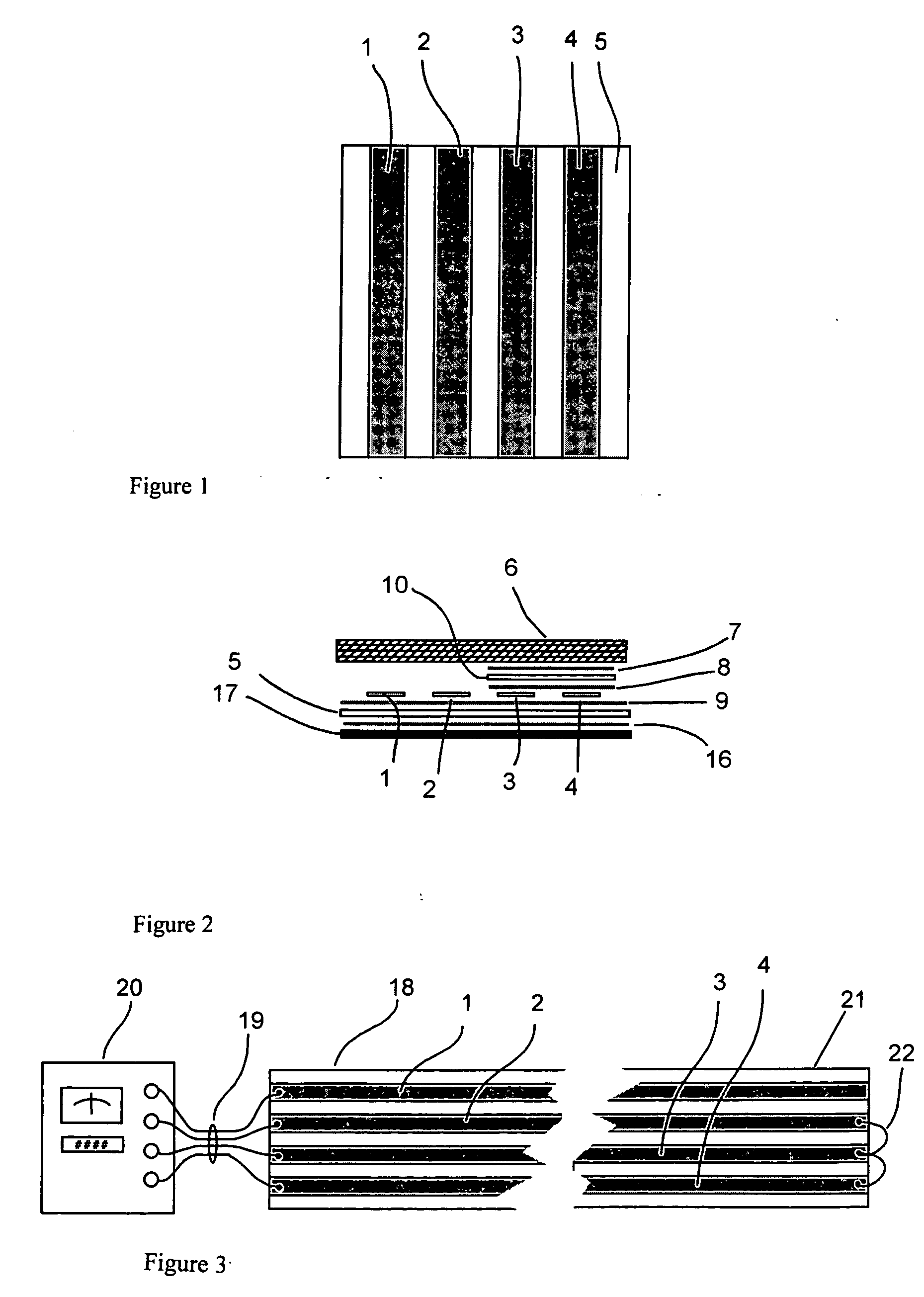Moisture detection sensor tape with leak locate
a technology of moisture detection and leak location, applied in the direction of fluid tightness measurement, instruments, structural/machine measurement, etc., can solve the problems of expensive problems, metal or plywood roof decking and rafters, and roof leakage costs homeowners, commercial property owners and property insurers hundreds of millions of dollars
- Summary
- Abstract
- Description
- Claims
- Application Information
AI Technical Summary
Benefits of technology
Problems solved by technology
Method used
Image
Examples
Embodiment Construction
[0066] Referring to the accompanying drawings, and particularly FIGS. 1 and 2, there is illustrated a moisture detection tape. The tape is constructed by laminating two moisture detection copper strips 1 and 2 and two loop-back copper strips 3 and 4 to a polyester substrate 5 using non-water soluble adhesive 9. An insulating layer of polyester 10 is laminated over the loop-back conductors using non-water soluble adhesive 8. A non-hygroscopic, non-woven, water pervious layer 6 is applied over the insulated loop-back conductors 3 and 4, detection conductors 1 and 2 and polyester substrate 5. A non-water soluble adhesive layer 16 that will adhere to common building materials such as wood, steel, concrete, etc. is applied to the underside of the polyester substrate 5. A 50.4 mm wide×0.1 mm thick peel off release layer 17 is applied over the underside adhesive layer 16.
[0067] The tape is constructed, in one example, by applying a non-water soluble adhesive 9 to a 50.4 mm wide×0.038 mm t...
PUM
 Login to View More
Login to View More Abstract
Description
Claims
Application Information
 Login to View More
Login to View More - R&D
- Intellectual Property
- Life Sciences
- Materials
- Tech Scout
- Unparalleled Data Quality
- Higher Quality Content
- 60% Fewer Hallucinations
Browse by: Latest US Patents, China's latest patents, Technical Efficacy Thesaurus, Application Domain, Technology Topic, Popular Technical Reports.
© 2025 PatSnap. All rights reserved.Legal|Privacy policy|Modern Slavery Act Transparency Statement|Sitemap|About US| Contact US: help@patsnap.com



